The Tribes model completely changed the way the Divante works. What are the differences? Let’s have a look at some real-life examples which may change the way you look at working in IT.
Check out available job offers in Divante ➝
Divate has been using the agile Tribes model for almost 3 years now. It’s how Divante managed to scale agile – without losing the company DNA. The Tribes model in Divante offers many benefits to the employees. In fact, it is all about people. I talked with some of them and listened to their stories. I found out about the real-life changes that the Tribes model brought in their everyday lives.
The tribes have made the employees’ world smaller
Iwona Jóźwiak, PHP developer, started working in Divante in 2013. Six years is donkey’s years in the IT world. During that time she was witness to huge structural and cultural changes in Divante. These days, she works as part of the Tribes model, a model which has changed everything and helped us to solve many long-standing problems for good.
Iwona told me that in the beginning, she was working in a small group, sitting on the first floor in Divante’s beautiful office building in Wrocław. Groups were small, people knew each other very well and they had a great atmosphere. Around this time, the company started to grow fast and hire new people. Three years later, Iwona changed her desk several times. Each time she also had to become familiar with new people around her. That wasn’t comfortable for her at all. Luckily, as it turned out, the change to tribes was very good.
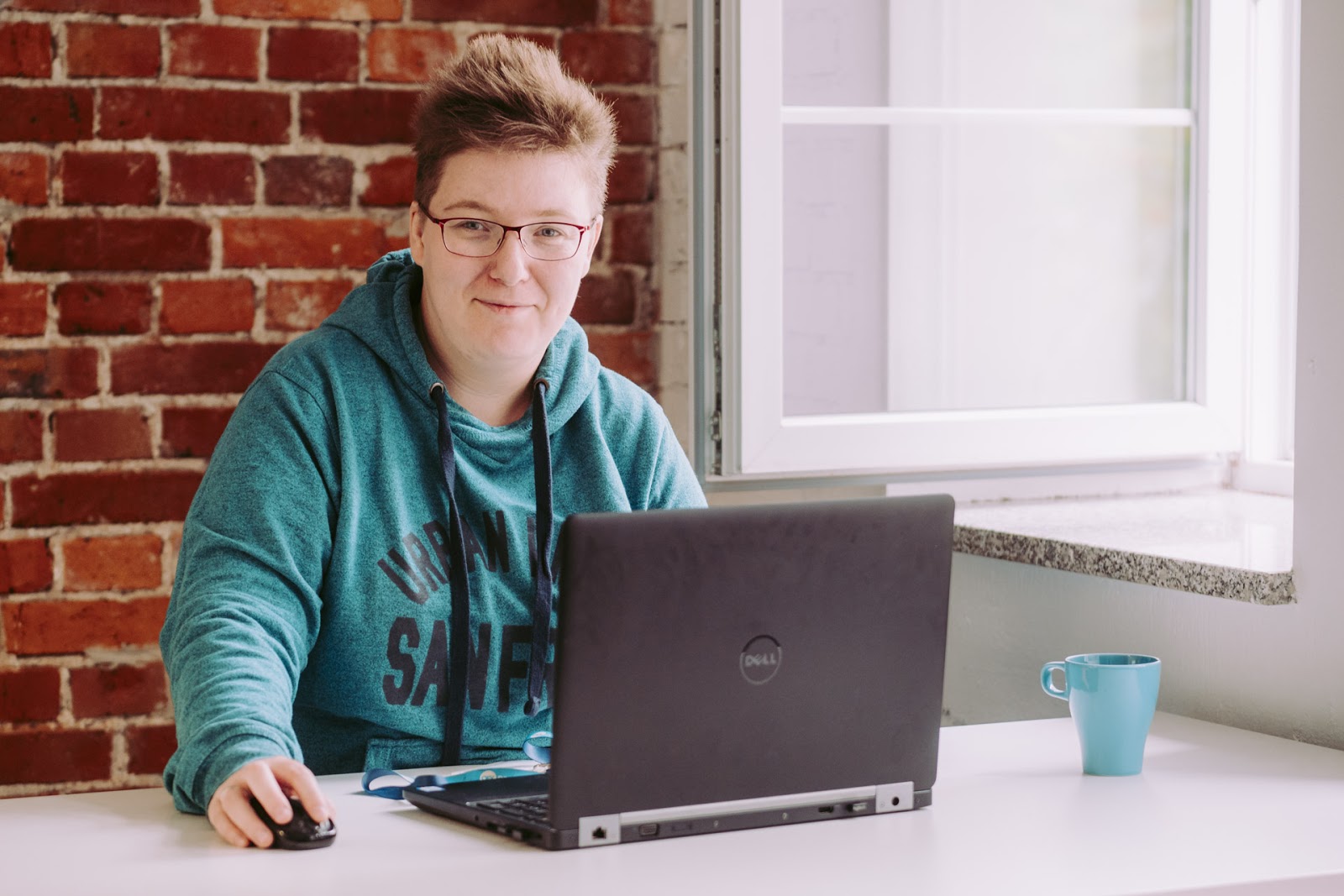
“When I started working at Divante, one person was able to manage the hosting and development department. Soon, he needed support, and after some time, even that was not enough. Divante was growing very fast. The hosting and development department split up. Both departments had directors and, additionally, vice directors. For some time, colleagues managed well but they had more and more responsibilities that soon outgrew them.” – Iwona Jóźwiak, PHP developer at Divante.
That was also a time of technological changes. IT doesn’t like stagnation. Many different developers had many different ideas. Problems deepened everywhere: from feedback, through code reviews and the work of the emergency team, to sharing knowledge and experience. People didn’t know each other well. That was the time for changes. The current structures had to go.
The first tribe, with the proud name “The A-Team”, was experimentally introduced – and changed everything. It was a perfect fit.
“The tribe has made our world smaller. It was like at the beginning, or even better. We’ve created our own small company, kind of a family, our brand, our principles. Projects change as before, but people stay in one tribe. This is a huge advantage. We know each other very well and we are aware of our strengths and weaknesses. We know what we can do and what we should change for the better. Within the tribe, it is much easier to create common rules and procedures. The Tribe Master has the opportunity to introduce changes in which he sees potential for the entire company. Each of us has an impact on how our workday looks.” – Iwona Jóźwiak, PHP developer at Divante.
The changes had the greatest impact on the sense of security and growth of individual developers, like Iwona. Before, directors were overloaded, so employees received feedback from them less and less frequently. They didn’t know what to change or how to improve their work. It’s a daily problem that many companies struggle to deal with. Iwona told me that the Tribes model has made people close to each other again. It’s much easier to give and receive feedback. Employees feel secure and comfortable.
“It’s the middle of May 2019, and I don’t know everyone in the company because there are too many of us. Yet, I work within familiar people, I am part of a larger family. I am glad that my Tribe Master knows my potential. I’m not anonymous, I do not work with random people. We care for each other. We have created a team within the tribe (5 people) which backs each other up during holidays and sick leave. With all the benefits of a small company, I feel safe because Divante is a mature, large company.“ – Iwona Jóźwiak, PHP developer at Divante.
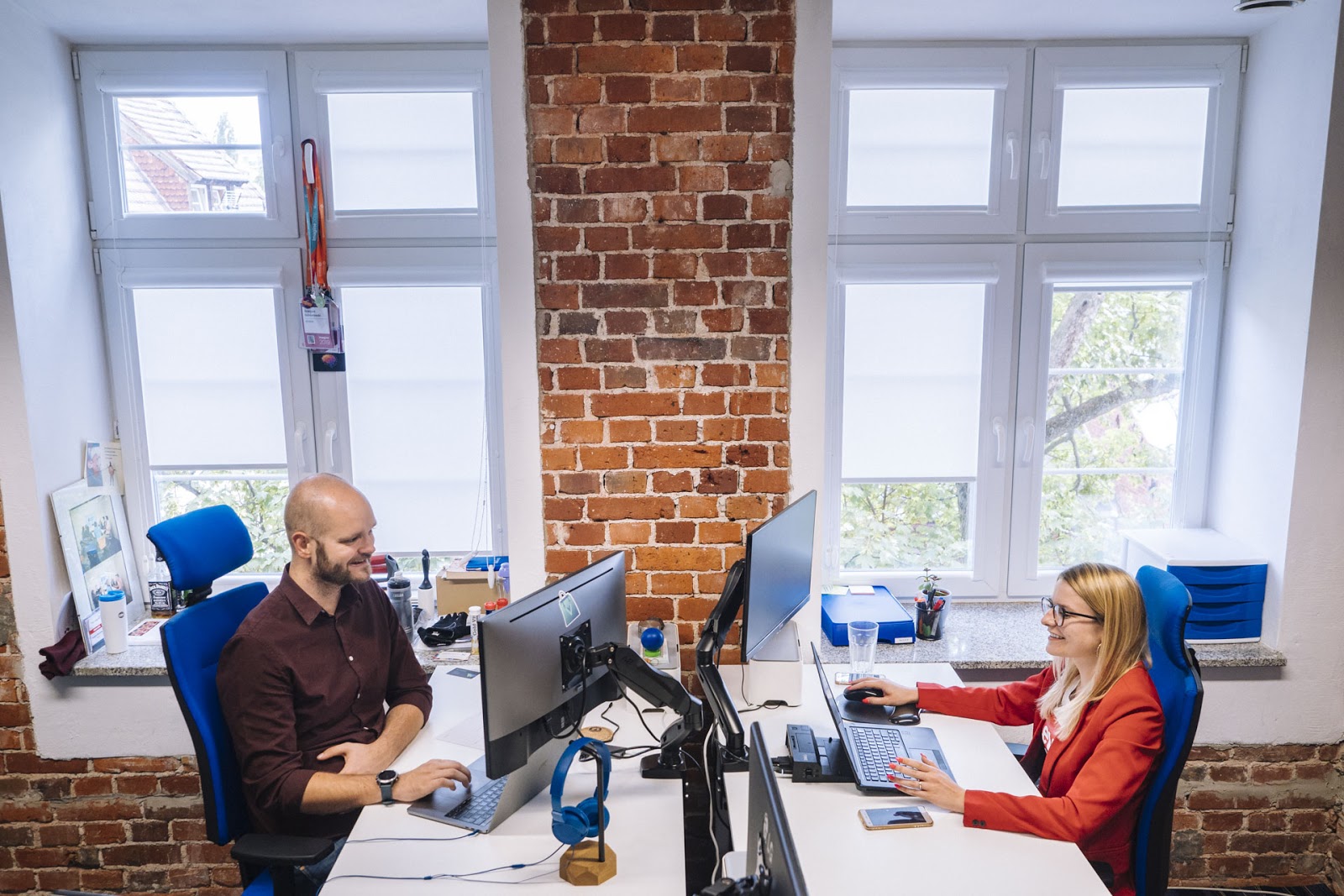
Quick decision-making process makes a difference
I asked Patrycja Wieliczko, Project Manager at Divante, what is the most visible, real-life difference between working in a regular departmental system and in a tribe. She answered, without hesitation, that it is the quick decision-making process.
“The way to the Tribe Master or Tribe Leader is very short and natural. In most cases, we sit close to each other and stay in contact. That helps so much in the daily functioning of the team. All matters related to leaving, formalities related to contracts or daily challenges at work can be solved in one conversation.“ – Patrycja Wieliczko, Project Manager at Divante

As a Project Manager, Patrycja focuses on being closer to the team and its needs. The tribes definitely help her with this goal.
“We have a common communication channel on the technical aspects of projects. It is mainly used to share knowledge and help in solving everyday challenges in projects in which teams work. Developers share their knowledge with testers, leaders and analysts. This helps to find answers to many questions much quicker.” – Patrycja Wieliczko, Project Manager at Divante
What’s more, the managers have weekly planning meetings. They share knowledge in the field of project work, assign specialists to projects based on their skills and in accordance with the planned individual development path. Meetings give the opportunity to share experiences among managers and provide effective work planning.
If you have an idea, it’s much easier to put it into practice. The doors to your own project are open
The Tribes model helped Tomasz Basiura, Lead Developer in Divante, to start his own project: “The Rooms Project”, as it’s called internally. The final result of his work is the answer to the real needs of people working in Divante.
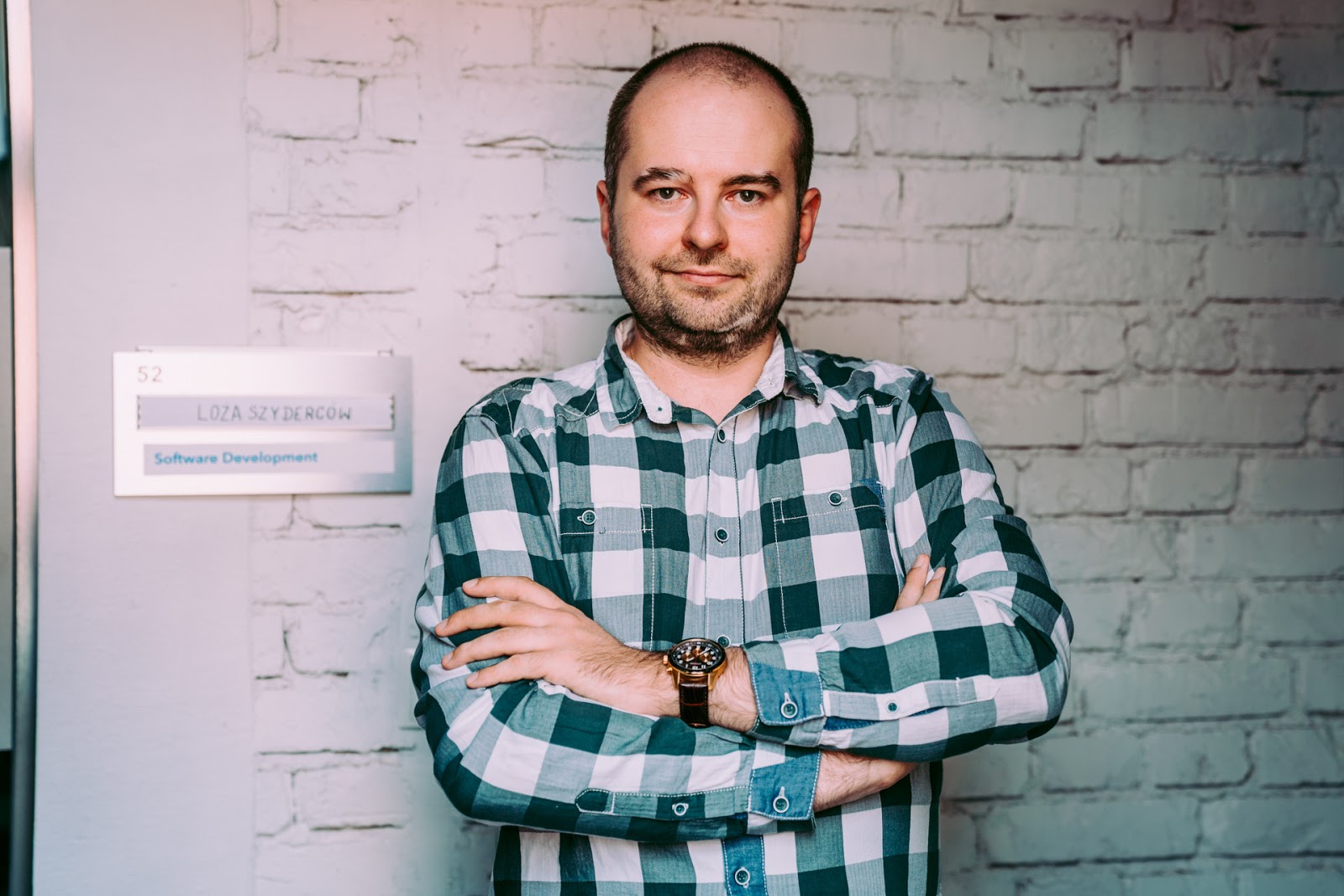
Tomasz came up with the idea of creating an internal system to book and manage conference rooms in the office. Each room has its own little touchscreen mounted next to the door. It displays information about current reservations with the option of checking basic data about upcoming events and creating a quick reservation. In the main screen view, we can see a list of the next few meetings taking place in the current room. The status of the room is indicated – half of the screen displays a green or red color depending on whether the room is free or busy. People can see how long it will take for the current meeting to finish and when the room will be free.
“I came up with the idea of such a tool while going to one of the meeting rooms in Divante. We use Google Calendar for reservations. This has its advantages, mainly due to the fact that we use many Google Tools and Google Calendar is one of them. It also has its drawbacks because you can easily book overlapping events. In the case of one-time meetings, it is easy to capture. In the case of recurring meetings, it requires you to scan many virtual calendar cards forward.” – Tomasz Basiura, Lead Developer in Divante.
When standing in front of the conference room, it’s much easier to use a touch screen next to the door rather than pulling out your laptop or clicking on Google Calendar on your smartphone.
We used Google’s API, so we were able to create a system of screens on conference rooms without any interference with the existing solution. Thanks to this, no one in the company has to change the way in which the meeting room is being booked.
“The system helped me a lot in everyday work. There are no overbooked conference rooms anymore. I organize and take part in many meetings, and I also like the clock on the tablet screen. It counts down the time to the next meeting, which helps to stay organized and finish the meeting on time. Many times I could also quickly book a meeting room without pulling my phone out of my pocket or reaching for a laptop. This project really simplifies our lives.” – Tomasz Basiura, Lead Developer in Divante.
“The Rooms Project” is in big part a result of working in the Tribes model, which supports what Divante calls “Drive”. It means that if you have an idea, it’s much easier to put it into practice in a small organization, as a tribe.
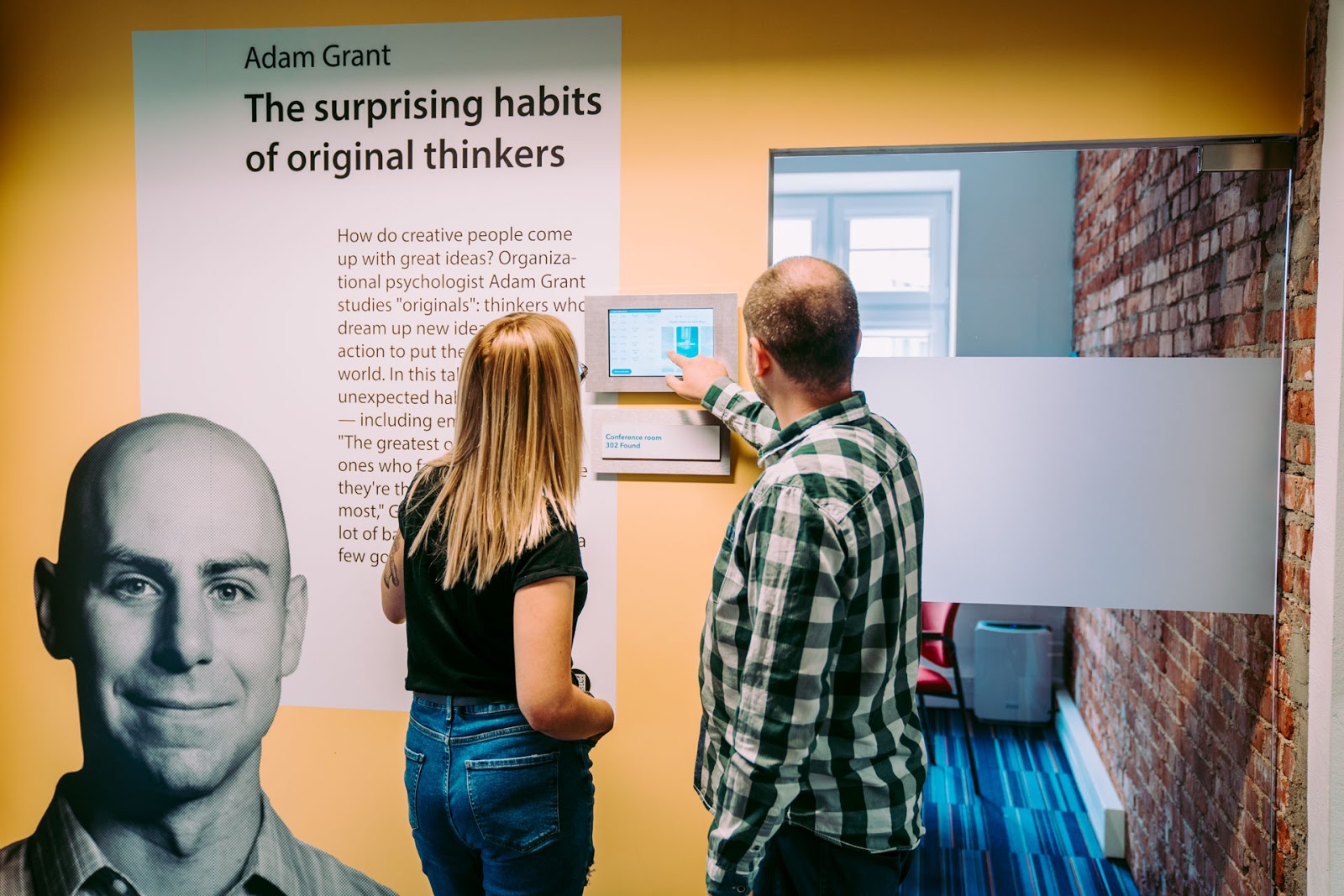
Tomasz told me that he didn’t have any problem presenting his idea to his Tribe Master. What’s more, the event encouraged him to start. It’s hard to imagine such a situation in a regular departmental system with several very busy managers and directors.
“I was able to discuss this idea with the Tribe Master. I didn’t have to give any presentation, wait for several approvals, talk with several managers or vice-directors. The path to the supervisor is much easier and shorter. This helped me to implement this project and slowly develop it over time.” – Tomasz Basiura, Lead Developer in Divante.
When the project became bigger, people from a few different tribes provided help and added their ideas. Anton Kryvokhat, a Frontend Developer at Divante, had a very important role in the system’s creation. He created the appearance and visual functions that can be used on the screen. The current interface is designed by Agnieszka Janich, Product Designer at Divante. Without these two people, screens would simply be ugly and nonfunctional.
Would you like to add your real-life example to this list?
The Tribes model at Divante changed the work culture in Divante for better – although it was always good. The company employees enjoy many benefits. They are more productive at work, feel secure, spend their time with familiar, small groups of people. Would you like to add your real-life example to this list? Read more about people in Divante and drop us a message.
Photos by Krzysztof Basel.
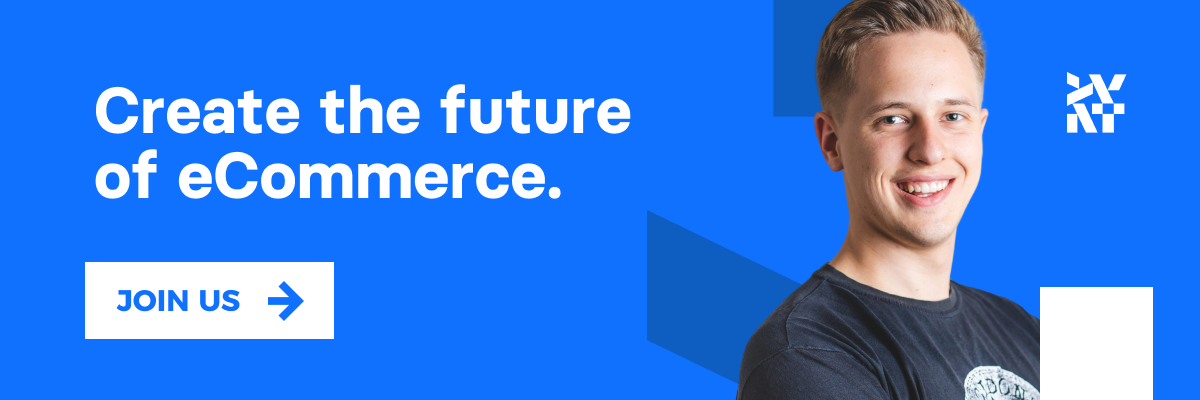
Published July 18, 2019














